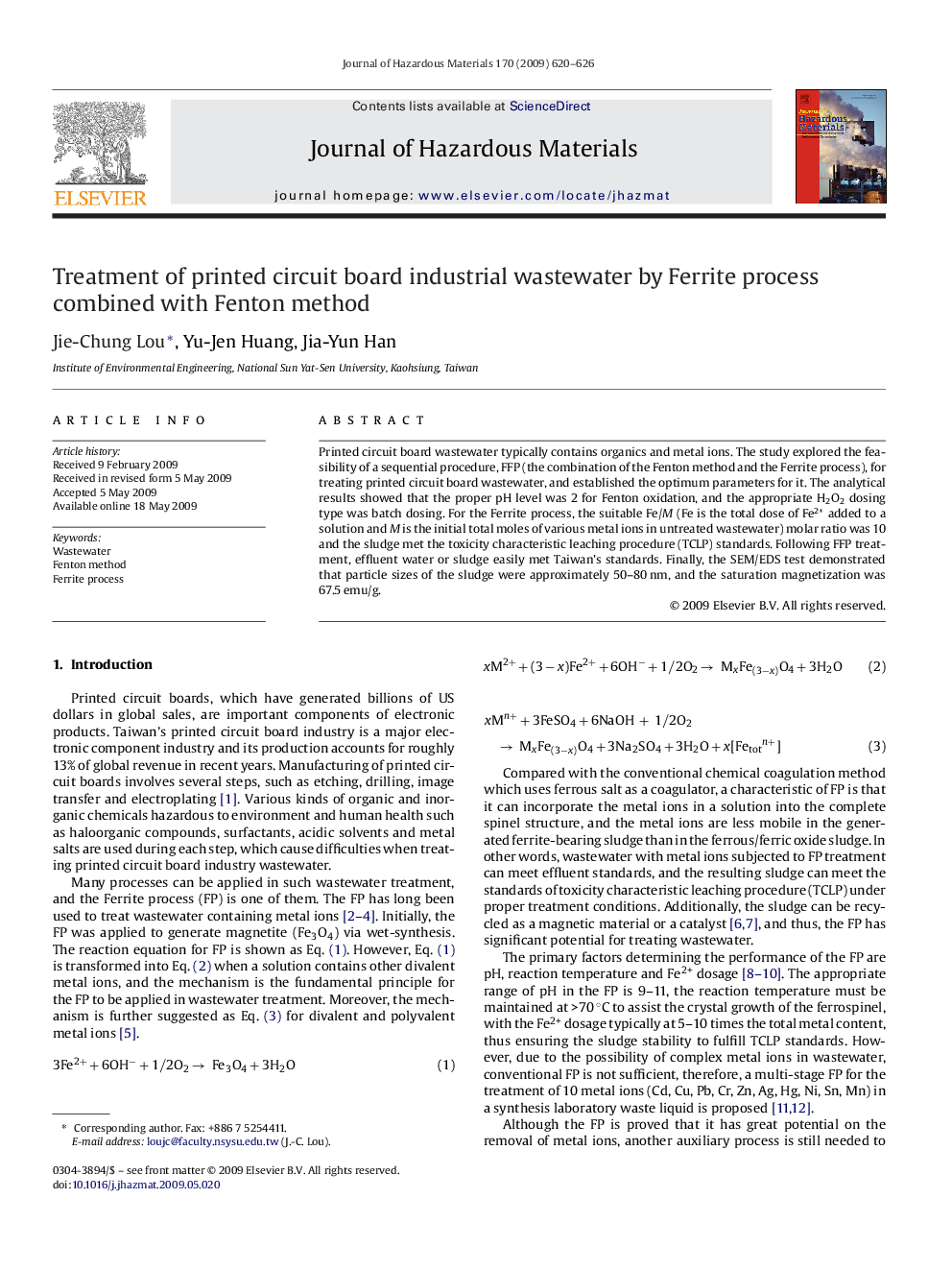| Article ID | Journal | Published Year | Pages | File Type |
|---|---|---|---|---|
| 581212 | Journal of Hazardous Materials | 2009 | 7 Pages |
Abstract
Printed circuit board wastewater typically contains organics and metal ions. The study explored the feasibility of a sequential procedure, FFP (the combination of the Fenton method and the Ferrite process), for treating printed circuit board wastewater, and established the optimum parameters for it. The analytical results showed that the proper pH level was 2 for Fenton oxidation, and the appropriate H2O2 dosing type was batch dosing. For the Ferrite process, the suitable Fe/M (Fe is the total dose of Fe2+ added to a solution and M is the initial total moles of various metal ions in untreated wastewater) molar ratio was 10 and the sludge met the toxicity characteristic leaching procedure (TCLP) standards. Following FFP treatment, effluent water or sludge easily met Taiwan's standards. Finally, the SEM/EDS test demonstrated that particle sizes of the sludge were approximately 50-80Â nm, and the saturation magnetization was 67.5Â emu/g.
Related Topics
Physical Sciences and Engineering
Chemical Engineering
Chemical Health and Safety
Authors
Jie-Chung Lou, Yu-Jen Huang, Jia-Yun Han,
